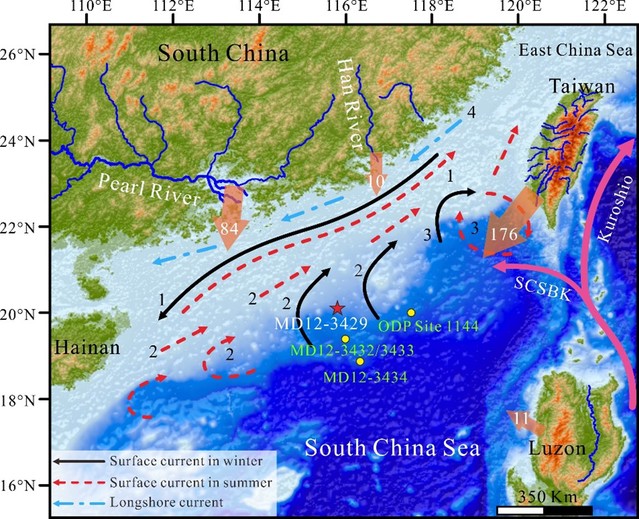chi zhang a, shouye yang a, *, xiangtong huang a, *, yanguang dou b, fangliang li a, xinning xu a, qiang hao a, jianhua gao c
state key laboratory of marine geology, tongji university, shanghai 200092, china
b key laboratory of marine hydrocarbon resources and environmental geology, qingdao institute of marine geology, ministry of natural resources, qingdao 266071, china
c school of geography and ocean science, nanjing university, nanjing 210023, china
abstract
ent source-to-sink processes in continental margins are determined by complex interactions among climate, sediment discharge, sea level and oceanic circulations on various temporal and spatial scales. the northeastern south china sea (nscs) margin is a natural laboratory to catch a glimpse of these processes due to large amounts of terrigenous sediment inputs and continuous sedimentations during the late quaternary. based on geochemical proxies including major element ratios and fractionation parameters of rare earth elements suggest that the detrital sediment in the core was derived primarily from the taiwan. the mar of terrigenous sediment yields an average 9.6 g/cm2/kyr, and high mar values are both observed in glacial and interglacial intervals. suggest that enhanced kuroshio intrusion might account for the transport of taiwan-derived sediment during the late quaternary. as indicated by a 31 kyr periodicity in em2, we infer that the development of el niño-like condition strengthened the intrusion of oligotrophic kuroshio from the luzon strait, resulting in the obvious increase of taiwan terrigenous mar but decreases of the primary productivity in the northeastern south china sea. this study provides deep insight into the complex terrigenous sediment source-to-sink processes in a fast-changing marginal sea environment during the late quaternary.
full article:


